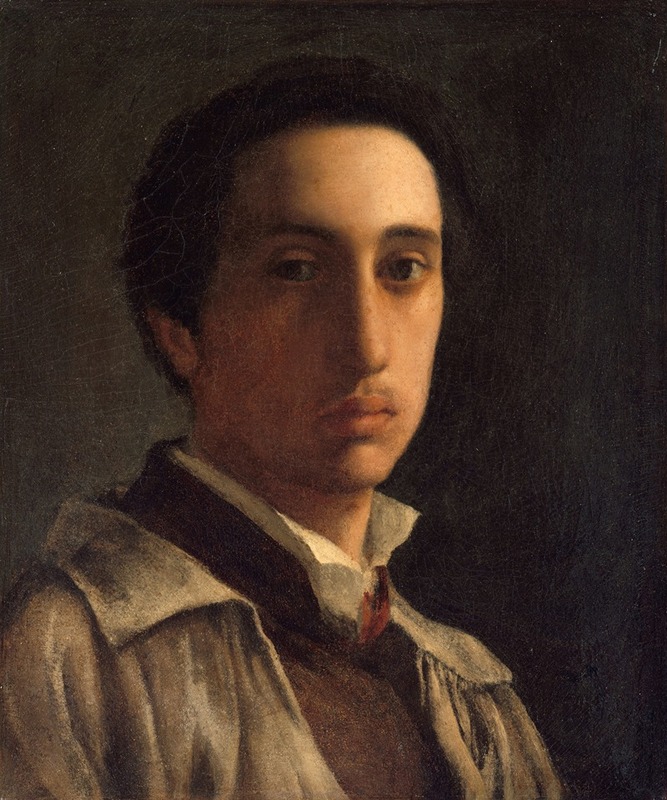
Self-Portrait
A hand-painted replica of Edgar Degas’s masterpiece Self-Portrait, meticulously crafted by professional artists to capture the true essence of the original. Each piece is created with museum-quality canvas and rare mineral pigments, carefully painted by experienced artists with delicate brushstrokes and rich, layered colors to perfectly recreate the texture of the original artwork. Unlike machine-printed reproductions, this hand-painted version brings the painting to life, infused with the artist’s emotions and skill in every stroke. Whether for personal collection or home decoration, it instantly elevates the artistic atmosphere of any space.
Edgar Degas, a prominent French artist associated with the Impressionist movement, created several self-portraits during his career, one of which is commonly referred to as Self-Portrait. This painting, completed around 1855, is an early work by Degas and reflects his academic training and interest in traditional portraiture. At the time, Degas was studying at the École des Beaux-Arts in Paris and was heavily influenced by classical techniques and the works of Old Masters, such as Ingres and Delacroix.
The self-portrait depicts Degas as a young man, presenting himself with a serious and introspective demeanor. The composition is straightforward, focusing on the artist's face and upper body, with a neutral background that emphasizes the subject. The brushwork is precise and controlled, showcasing Degas's technical skill and his commitment to realism during this period of his career. The use of light and shadow in the painting highlights the contours of his face, lending a sense of depth and three-dimensionality.
This self-portrait is significant as it provides insight into Degas's early artistic development and his self-perception as a young artist. Unlike his later works, which often featured dynamic compositions and experimental techniques, this painting adheres to the conventions of traditional portraiture. It serves as a testament to his formal training and his ability to capture the human form with meticulous detail.
The painting is housed in the Musée d'Orsay in Paris, which holds an extensive collection of Degas's works. It remains an important piece for understanding the evolution of Degas's style, from his academic beginnings to his later innovations in depicting movement and modern life.

















